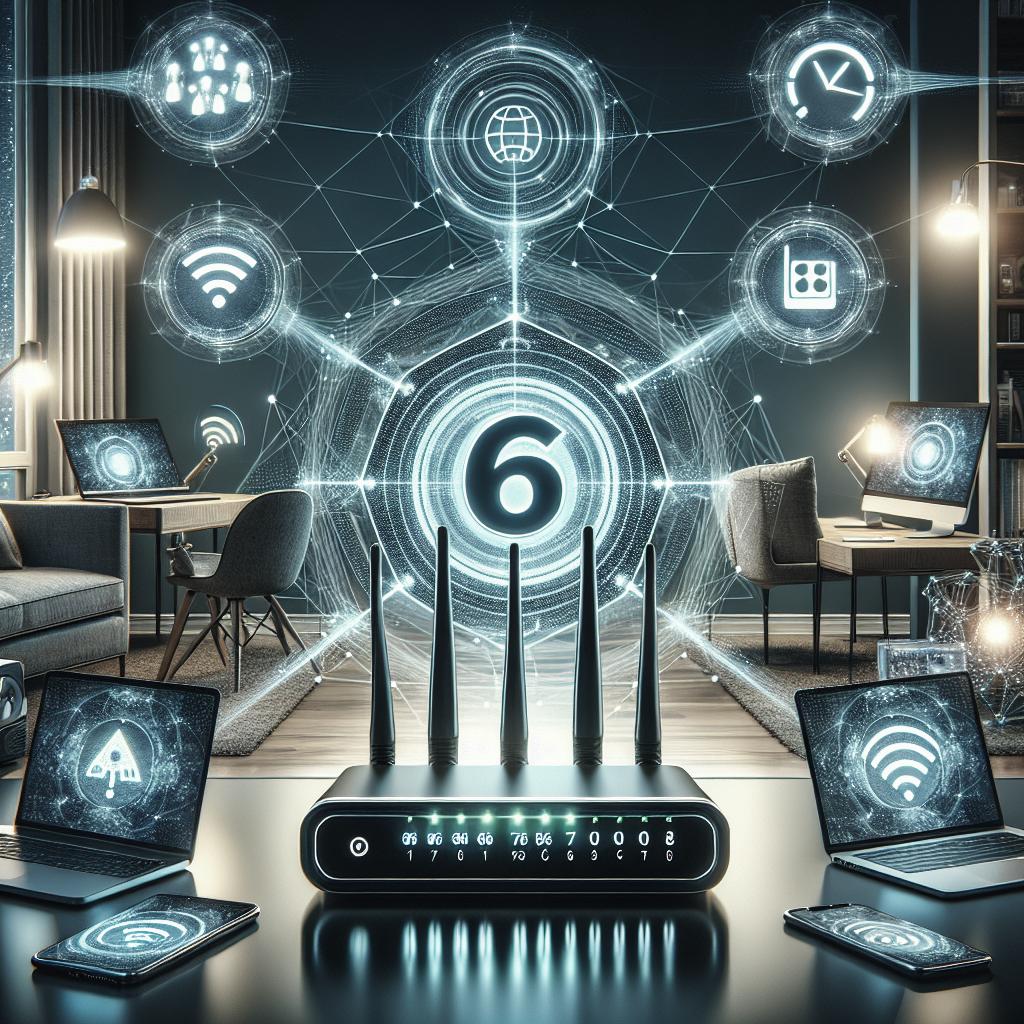Abstract
Quantum computing, with its monumental capabilities, is steadily making its mark in the telecommunications sector. This blog post delves into the various aspects of quantum technologies, such as quantum communications, randomness, computing, and metrology, examining their roles and potential impacts on telecommunications. From the integration of Quantum Key Distribution (QKD) to advancements in high-performance computation, this post navigates the transformative influence these technologies have on the industry. Additionally, the article covers quantum clocks and their significance in enhancing industry standards. Through a systematic structure, this content aims to provide insights into current technologies, their applications, adoption drivers, and implications for the future of telecommunications.
1 Introduction
The advent of quantum computing is reshaping a vast number of industries, and telecommunications is no exception. Quantum mechanics principles hold the key to solving complex problems that classical computers cannot efficiently tackle. Telecommunications, which relies heavily on data transfer, security, and synchronization, can greatly benefit from these advancements. This blog article explores how quantum computing influences telecommunications by enhancing communication security, improving the generation of randomness, optimizing computations, and refining timing through quantum clocks.
The intersection of these quantum technologies promises not only to elevate the security and efficiency of existing systems but also to open new realms of possibilities that were once deemed unreachable with classical technology. This detailed exploration begins with an understanding of quantum communications and extends to include quantum randomness, computing, and metrology in telecommunications to offer a holistic view of the industry’s evolutionary path.
2 Quantum communications
2.1 Technological description and state of the art
Quantum communications leverage quantum entanglement and superposition principles to facilitate secure communication channels. Quantum Key Distribution (QKD) is a pivotal technology within this segment that allows secure sharing of encryption keys, providing a level of security unattainable by conventional methods. Theoretically, any interception of the communication would alter the state of the system, thereby alerting the parties to potential breaches.
The current state of the art in quantum communications is witnessing substantial research and experimental deployments across the globe. Countries like China and leading tech companies are making strides in establishing quantum networks that leverage satellite and fiber-optic connections. The Pan-European Quantum Internet Alliance, for instance, is already advancing a dedicated quantum network across Europe.
2.2 The integration of QKD in telecommunications networks
Integrating QKD into existing telecommunications infrastructures involves addressing challenges such as distance limitations and integration costs. However, advances in technology are overcoming these hurdles, resulting in hybrid systems that combine both quantum and classical methods. Financial institutions and government agencies have begun pilot projects to assess the applicability and practicality of QKD within secure communication strategies.
Telecommunications companies are exploring the coexistence of quantum channels alongside classical networks, which allows for seamless and gradual integration without overhauling existing systems. This integration is crucial as it provides a roadmap for scaled adoption that aligns with contemporary infrastructure capabilities.
2.3 Applications and adoption drivers
One primary application of quantum communications is in enhancing data security. In an era where data breaches are becoming increasingly sophisticated, QKD presents an unbreakable layer of security. Additionally, as 5G and eventual 6G networks evolve, quantum communications are expected to provide secure, high-capacity channels that align with next-generation requirements.
The key drivers for QKD adoption include the escalating demand for data protection in telecommunications and the progressive regulatory guidelines emphasizing secure communications. The exponential growth in digital transactions and reliance on cloud services adds further impetus to integrating quantum solutions into mainstream telecommunications.
3 Quantum randomness
3.1 Technological description and state of the art
Quantum randomness exploits the inherent unpredictability of quantum mechanics to generate truly random numbers, critical in encryption and secure communications. Quantum Random Number Generators (QRNGs) offer substantial improvements over classical pseudorandom generators by eliminating biases associated with software-based randomness.
The state of the art for QRNGs includes chip-scale integrations that are commercially viable for consumer electronics, offering immediate encryption benefits. Corporations like ID Quantique have begun developing devices that harness quantum randomness to enhance data security frameworks in various industries, including telecommunications.
3.2 Quantum entropy and randomness within the telecommunications industry
Within telecommunications, true randomness is essential for creating secure encryption keys and protecting sensitive user data. The volatility inherent in quantum systems is leveraged to generate entropy that reinforces the integrity of cryptographic protocols. This ensures that the encryption keys remain unpredictable and resilient to sophisticated cyber threats.
Telecommunications companies are exploring hardware solutions that integrate QRNGs for enhanced security, with potential uses spanning across mobile devices, IoT applications, and data centers. As reliance on digitally encrypted communications escalates, so does the necessity of integrating quantum-generated randomness to safeguard information transmission.
3.3 Applications and adoption drivers
Quantum randomness supports myriad applications, such as high-frequency trading platforms, where the authenticity and speed of transactions are paramount. In telecommunications, QRNGs enhance the protection measures for VoIP calls, messaging apps, and other data services reliant on sophisticated encryption techniques.
Adoption drivers include the growing sophistication of cyber threats targeting telecommunications networks and the demand for higher security standards, given the critical nature of services provided. QRNGs offer a cost-effective means of bolstering existing security measures, providing an attractive proposition for widespread adoption within the industry.
Increasing security and performance of the infrastructure
The integration of quantum randomness significantly fortifies telecom infrastructure. As cyberattacks grow in complexity, the randomness provided by quantum technologies acts as a robust mechanism against various threats, effectively transforming security paradigms within the industry.
Performance enhancements stem from the optimization of existing infrastructure. Quantum randomness enables the development of more efficient encryption algorithms that not only improve security but also streamline data processing, thereby enhancing the overall performance of telecommunications channels.
High-performance computation
Traditional computation struggles with certain classes of problems, which quantum computing has the potential to solve more efficiently. High-performance computation tasks, such as optimizing telecommunication networks and managing large datasets, can greatly benefit from quantum processing power.
The telecommunications sector, through advanced computational capabilities, can optimize routing protocols, reduce latency, and improve bandwidth distribution, making overall operations far more efficient and cost-effective.
Applications
The ability to process and analyze large volumes of data quickly using quantum computing impacts areas like network optimization and resource allocation, where rapid, precise calculations are imperative. For instance, telecom companies can leverage quantum algorithms to forecast network demands and preemptively address potential bottlenecks.
Quantum solutions are poised to support next-generation technologies, such as large-scale IoT networks and urban infrastructure optimization, contributing substantially to the advancement of smart cities and autonomous systems within the telecommunications landscape.
4 Quantum computing
4.1 Quantum software
Quantum software refers to programs specifically designed to run on quantum hardware, utilizing unique quantum properties to perform computations. Developing quantum algorithms that optimize data processing, encryption techniques, and network management is essential for exploiting the full potential of quantum computing within telecommunications.
Current efforts in quantum software focus on optimizing classical algorithms to run on quantum systems efficiently. Researchers and companies are developing frameworks and libraries that enable secure communication protocols and complex problem-solving methods, bolstering the robustness and efficiency of network infrastructures.
5 Quantum metrology
5.1 Quantum clock
Quantum clocks represent the pinnacle of precision timing devices, crucial for synchronization within telecommunications networks. By exploiting quantum superposition and entanglement, these devices achieve unprecedented accuracy, significantly enhancing the synchronization of distributed systems.
Quantum timekeeping is vital for tasks like timestamping transactions, aligning data packets for coherent transmission, and optimizing network timing protocols, all contributing to the seamless operation of telecommunications infrastructure.
5.2 Technological description and state of the art
The operation of quantum clocks is based on the resonant frequencies of atoms, offering precision far beyond that of standard atomic clocks. Improvements in laser and optical technologies have refined clock accuracy down to the nanosecond level, making them suitable for telecommunications needs.
Currently, research in quantum metrology focuses on miniaturizing these clocks for deployment in terrestrial and satellite systems, promising greater autonomy and precision for complex network structures.
5.3 Quantum clocks in the telecommunications industry
The role of quantum clocks in telecommunications extends to enhancing the reliability and accuracy of data transmission. As telecommunications networks expand, maintaining precise timing becomes increasingly challenging but essential for operation and service delivery continuity.
By integrating quantum clocks, telecom providers can ensure more accurate synchronization across global networks, thereby improving service reliability and customer satisfaction. The precise timekeeping facilitates smoother transitions in data flow, reducing error rates and enhancing user experience.
5.4 Applications and adoption drivers
Quantum clocks find applications in areas such as GPS integration, where accurate timing is crucial for real-time navigation services. Telecommunications providers utilize these advancements to ensure data point precision in services requiring tight synchronization, such as global financial transactions.
Adoption drivers include the need for high-precision applications, increasing global network dependencies, and the emerging regulatory requirements for timestamp accuracy in digital communication and commerce transactions.
6 Next steps
| Quantum Technology | Impact on Telecommunications | Applications |
|---|---|---|
| Quantum Communications | Enhances security through QKD and secures data transmission channels. | Data security, integration with 5G/6G networks, secure transactions. |
| Quantum Randomness | Provides robust encryption and optimizes operational protocols. | QRNG in cybersecurity, secure communications, IoT networks. |
| Quantum Computing | Optimizes network management and resource allocation. | Network optimization, data processing, IoT management. |
| Quantum Metrology | Improves synchronization and precision timing in networks. | GPS augmentation, network synchronization, timestamp accuracy. |
Availability of data and materials
Data supporting this article’s findings are available upon request from the authors.
Notes
This article is intended as an informational resource and may not cover all possible aspects of quantum telecommunications interactions.
Abbreviations
- QKD: Quantum Key Distribution
- QRNG: Quantum Random Number Generators
References
References to research papers, websites, or articles that inspired or aided the research can be included here.
Acknowledgements
Special thanks to the telecommunications researchers and quantum physicists who contributed to the development of the information shared in this article.
Funding
No external funding was received for this research.
Author information
Authors and Affiliations
Lucas Martin – Independent Researcher and Freelance Journalist specialising in telecommunications and quantum computing.
Contributions
LM performed the research, authoring, and editing of the article.
Corresponding author
Correspondence to Lucas Martin.
Ethics declarations
Competing interests
The authors declare no competing financial interests.
Rights and permissions
The article is open access and may be shared with appropriate credit given to the authors.
About this article
Cite this article
Lucas Martin: Quantum Computing and Its Impact on Telecommunications, 2023.
Share this article
This article can be shared freely via social media and professional networks.


